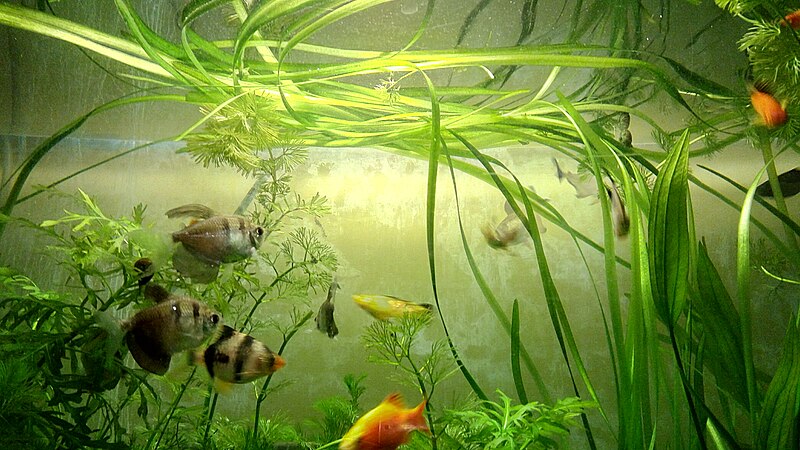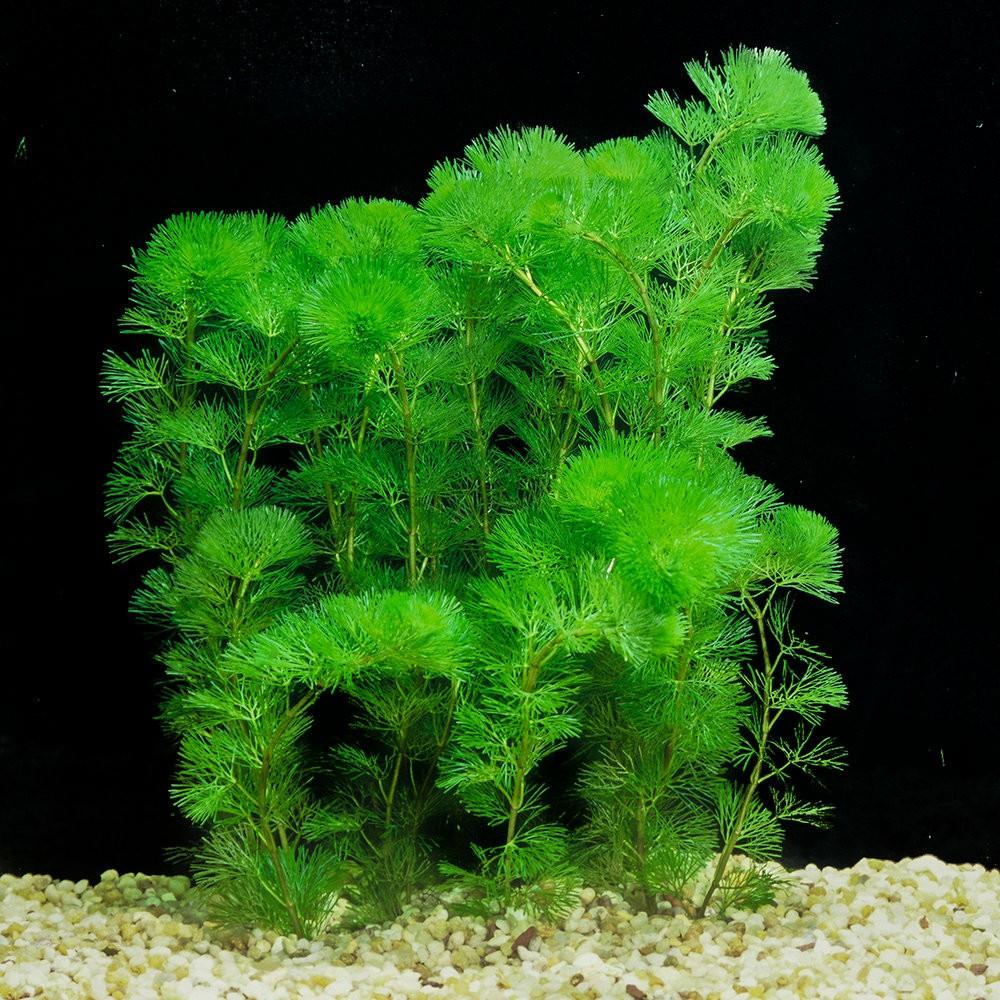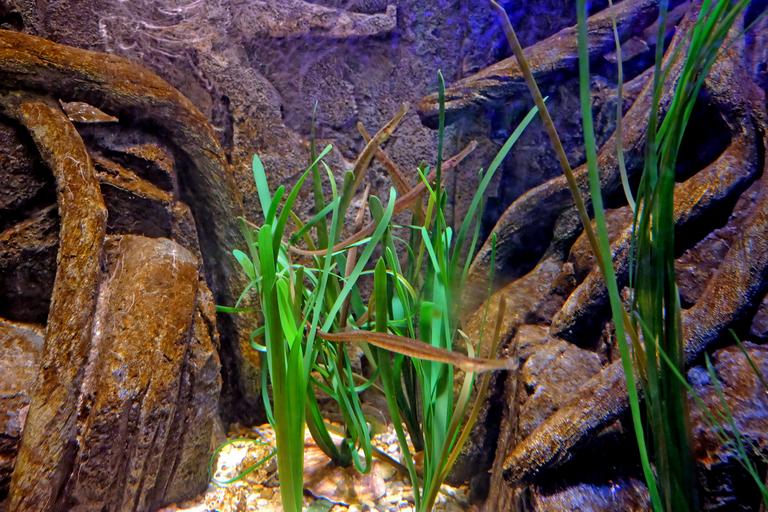Believe it or not, fish and ornaments aren’t the only things you can add to your home aquarium or tank! Many people choose to set up their tanks with gorgeous plants and aquatic species of flower, meaning that you can add yourself a little more color and charm to your aquarium space.
Floating freshwater aquarium plants are among some of the most popular, particularly as they add even more character to a tank.
But what if you’re completely new to the idea of adding floating plants to your freshwater tank? There’s no need to worry.
Freshwater fish will, by and large, get on really well with floating plants living and propagating in the same tank, meaning there shouldn’t be that much preparation for you to need to consider.

However, everyone has to start somewhere, so we’ve set up this quick guide to give you a breakdown on what to expect from floating plants for freshwater tanks at home.
We’ll answer a few questions about these plant species and will then give you a rundown of some of our absolute favorites.
Will Floating Plants Block Light?
When you’re setting up floating plants for your tank or aquarium, you do need to be very careful with light conditions.
Floating plants can block tank LEDs if you layer too many of them over the top of the water, meaning you’re going to need to be careful that things aren’t too dark down below.
However, this does depend on what else you have living in your tank. If you have plants living towards the bottom of your aquarium and are worried that they’re not going to be getting the light that they need, you are going to need to carefully weed out a few of the floating varieties to make sure everyone gets a fair blast or two of natural light.
That said, plenty of freshwater fish do enjoy low light conditions. This is going to vary from species to species.
Therefore, yes – floating plants can block light. However, depending on whatever else you may have in your tank at any one time, this might not always be a problem.
Be sure to consider what your fish and plants need in the long run and carefully arrange your floating species as best you can. Don’t forget to weed and trim occasionally if you have lower LEDs that are struggling.
How Do I Make My Aquarium Plants Float?
You can’t make all aquarium plants float! There are a few species which float naturally, and which grow while drifting about in the water and to the top of your tank surface.
Therefore, sadly, you can’t expect the odd sea cucumber to suddenly start drifting. If anything, there are going to be plenty of aquarium plants which prefer a flat rooting towards the bottom of their domicile.

Don’t worry, however, as of the many different floating plants for freshwater tanks that exist, the majority are really easy to set propagating. They mostly won’t need much encouragement to grow and start making your tank look that little bit extra special.
Therefore, a great place to start will be to look for floating plants that really appeal to you. Don’t worry, we’ve lined up our absolute favourites a little further down in this guide. Keep reading!
Do Floating Plants Oxygenate the Water?
Yes! Much like other plants that you will likely host further down into your tank, floating plants are great at helping to keep the air balance and to boost the health of your tank’s ecosystem. Therefore, you can expect floating tank plants to be able to offer you a lot of water oxygen in return.
In fact, as floating plants immerse their leaves, there’s no need for them to take in carbon dioxide. This means that they are all about drinking in the carbon and pushing out the oxygen.
For your fish and other plants in the tank, this makes the aquarium environment even healthier and safer for your species to live in.
You may even find that some floating plants help to create and preserve environments that are ideal for alternative plant propagation, as well as breeding conditions for specific freshwater fish.
Don’t take our word for this face-on, however, as naturally, the best conditions for each species is going to vary from case to case.
Types of Aquarium Floating Plants
Right – time to take a look at a few fantastic aquarium floating plants. The following species are not just our absolute favorites but are also among some of the easiest to come by and to propagate in a freshwater tank.
Be sure to consult our rundown below and find yourself a great-looking floating plant species that brightens up and oxygenates your tank for the healthier.
Coontail
Coontail is a fully submerged, brown flowered plant that goes by a few different names. It grows in warm to cold waters all over the world, and you may have heard them called hornwort in some locations. It has lots of forked stems to help it look like a raccoon’s tail, hence the name!

Coontail plants are really easy to grow as they are amazing propagators. They like mild water and tend to be a popular choice.
However, you must be careful with other plants if you are considering introducing coontail or hornwort. They tend to be fairly invasive, which means they can suck up plenty of nutrients from other plants they float with. They might do best on their own without mixing.
Cabomba
The cabomba is a great floating plant that offers a spiky, bushy look, but this really is a boost to those fish who need to have somewhere to hide every once in a while.

Cabomba tends to get a bad name for itself because it’s technically a weed! However, don’t let that put you off. It’s a floating plant species that thrives brilliantly in low light, making it a species that probably won’t need much encouragement.
We love cabomba because it’s a misunderstood floating plant and that it is so easy to look after – and it’s great to look at.
Limnobium laevigatum / Amazon Frogbit
Whether you know it by its Latin name or its froggy title, this great floating plant is ideal for creating shady tank conditions, and what’s more, you often won’t need to do much with it.

These long-rooted floaters have Lilypad-like rosettes, which helps to give them the name ‘frogbit’. They can be fantastic fun for fish that love to explore, and they can add a lot of character to your tank.
However, one of the main issues regarding Limnobium laevigatum is that it tends to propagate and cover the surface. This is all well and good if you have fish that like dark and shady conditions, but not so much if you have other plants that need as much light as possible!
Java Moss
Java moss is a really interesting plant. It doesn’t have roots, though many people will choose to base it at the bottom of their tanks! Instead, be sure to let it float free.
:max_bytes(150000):strip_icc():format(webp)/Java_moss_Mobile_Gnome-56a3305d3df78cf7727c4db5.jpg)
This curious green carpet is a great addition to any tank or aquarium in need of a bit more colour and a bit more of that ‘wild’ touch. It has roundish leaves and will need anchoring if you want to let it float to the top of the tank.
However, again, be careful with other plants in your tank if they are going to need to access to light so they can photosynthesize, too!
Dwarf Water Lettuce
Dwarf water lettuce is a great looking tank plant that adds a real ornamental look to the water, particularly as it will float up and give your surface that little bit of a delicate touch. It’s super tasteful and a real winner if you want fast growing floating plants to transform the aesthetic of your aquarium at home.
Dwarf water lettuce is also really easy to keep control of. It’s not only a first choice for many tank keepers for the stylish touches it adds to the water, it’s also simple to trim and cut back on if you need to.

Unlike some plants in this list, while the water lettuce will still block out some light if you give it the opportunity to, it’s not going to run rampant unless you give it reason to.
These tend to be pretty large on the whole – go for a bigger tank than most and you’ll be able to grow plenty of lettuces without fear!
Water Wisteria
Lastly, the leafy water wisteria is a great choice if you’re just getting into floating plants. That’s because you can root them as well as float them, meaning you can set them up in pretty much any way you wish.

It’s nice and thin and grows really quickly – great for fish that want to play hide and seek. However, water wisteria is one of the plants mentioned earlier in the article that may suffer if other floating plants in the tank take up too much light!
However, this is still an absolutely beautiful plant – just be sure to balance it and keep it in check so other plants can enjoy the same conditions!
SOURCES


